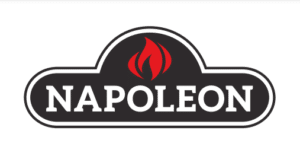While the actual fireplace unit installed in your home is very important for your final product, it’s not the only element to consider here. You may also be utilizing a number of fireplace accessories, which refer to anything besides the actual physical fireplace unit, and having some basic knowledge on these other accessories can be very important as you both set up and maintain your fireplace.
At Comfort Solutions Fireplace, it’s our pleasure to assist clients with all their accessory needs, whether you’re purchasing a gas fireplace, electric fireplace or any of our other custom fireplace options. What are some of the most common accessories utilized in or around fireplaces, and what should you know about them as you’re getting your setup organized? This two-part blog series will go over everything you need to know, going in somewhat alphabetical order to keep things simple.
Base
Mostly utilized for wood stoves and similar units, a base is a platform that your stove will sit on top of. It’s important to make sure that this platform is level, as an unlevel stove can result in damage to the unit or your home. The base also needs to be large enough to give the unit plenty of clearance on all sides – at least 18 inches is ideal, but more may be necessary depending on the size and design of your stove.
Blowers
One of the most important accessories for various fireplace styles, a blower helps to circulate heat throughout the room by pushing air out of the stove and into the room. Blowers can be manual or automatic, and many newer models come with a thermostat that will turn the blower on and off as needed to maintain a consistent temperature.
In many cases, blowers will also simply be called fans. It’s important to note that blowers themselves do not create any additional heat, but rather simply help circulate the heat around.
Burners
For gas fireplaces, a burner is an essential component as it’s what actually produces the flames. Different styles of fireplaces will utilize different types of burners, so it’s important to consult with a professional to ensure you’re using the right type for your unit. Additionally, the size of the burner will also be a factor to consider.
Faceplate
For both gas fireplaces and gas inserts, a faceplate is the trim that goes around the opening of the unit. This can be made from a number of different materials, including wood, metal or stone, and its purpose is both aesthetic and functional. Not only does it help give your fireplace a finished look, but it also serves to protect the unit from any debris or other elements that could potentially cause damage.
In part two of our series, we’ll go over some further fireplace accessories to be aware of. For more on this, or to learn about any of our fireplace products or services, speak to the staff at Comfort Solutions Fireplace today.

